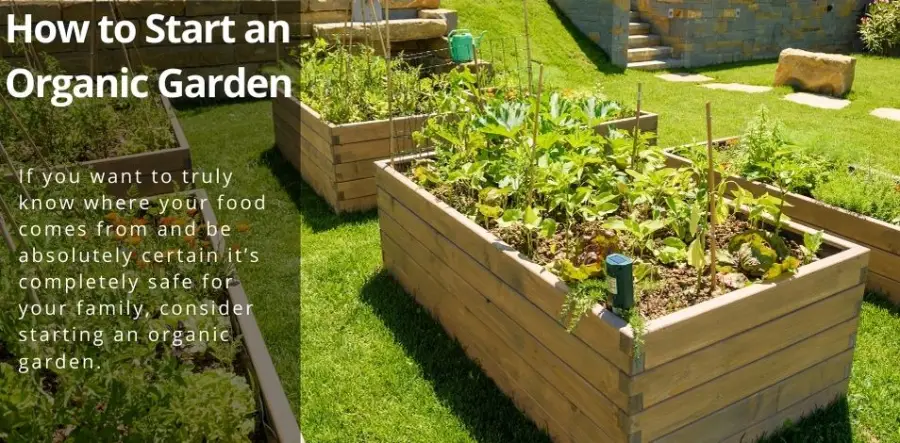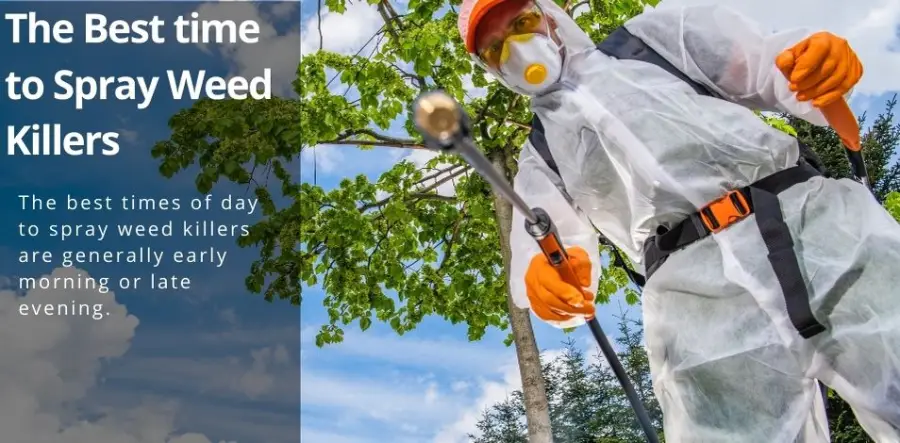There are several reasons why someone would want to create a low-maintenance garden. Maybe you’re not the best gardener (ahem, like me), or maybe it’s simply too hot in summer to put in much time outdoors. Whatever your reasoning, this article will provide low-maintenance gardening tips.
Table of Contents
ToggleChoose the right Soil
Contrary to popular belief, the type of soil you have is not the deciding factor in whether or not your garden will require frequent watering. The amount of water retained in your soil is what matters. So if your goal is to create a low-maintenance garden, aim for sandy, well-draining soil because it retains water the least.
Type of Plants
Some plants are native to moist environments, while others prefer dry places. Keep this in mind when selecting types of plants for your garden. If you live in a hot, dry climate and wish to create a low-maintenance garden, avoid planting moisture-loving plants such as hydrangeas, blueberries, rhododendrons, and begonias.
The easiest way to determine what type of plants will grow in your garden is to take a walk around the area and see what other people have grown there. Note which ones require large amounts of water or fertilizer and try to avoid those types when creating your own garden. Also avoid invasive plants, such as mint and kudzu.
Time to Water
The amount of time a plant requires in order for you to water it is a good indicator of how low-maintenance it will be. Most traditional gardens require daily watering, but there are plenty of beautiful garden alternatives that require much less. From hanging baskets filled with succulents to simple low-water shrubs, there are plenty of ways to create a beautiful outdoor aesthetic while conserving water.
To make sure you know how much time and effort your garden will require, follow these guidelines:
• Annuals – water every 2-3 days
• Vegetables – weekly watering is good enough for most vegetables like tomatoes and carrots
• Perennials – weekly watering is good enough for most perennials such as rose bushes, tulips, and marigolds
• Shrubs – monthly to bimonthly watering should suffice
• Trees – trees naturally lose a lot of water in the summer so only water them when necessary. Also, avoid planting them in dry areas.
Hardscape
Adding hardscape to your garden will instantly create a more formal, traditional feel. However, you can also create a more contemporary look by removing the hardscape entirely and improvising with free materials such as rocks and wood. This will allow you to easily replace the material should it wear out or if you simply get tired of it.
If you choose to add hardscape, one option is to use bricks as a guide for garden paths and other areas where you walk frequently. This will keep the soil from eroding should your garden be prone to flooding or excess clouding. Soil erosion can cause pathways to collapse and allows fungus and insects to thrive in the moist environment.
If you decide to add a hardscape, make sure plants are placed on either side of paths so they can grow between the bricks for a more natural look. This will prevent pathways from becoming too crowded with plants later down the road.
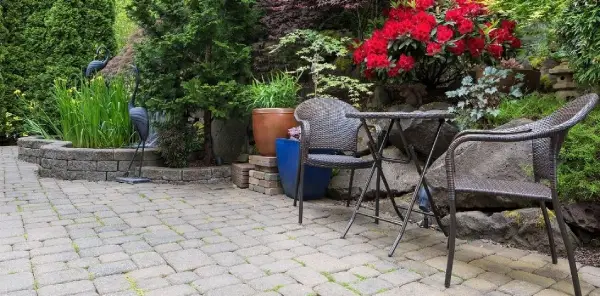
Lighting
Adding lighting is an excellent way to increase curb appeal at night and provide a lovely backdrop to your garden. After all, there is nothing more beautiful than a low-lighted area with flickering lights. The best thing about adding lighting is that it’s easy and inexpensive. For example, think about how much you might spend on landscaping or hardscaping materials to create a similar effect as lighting does.
The type of lighting you add to your garden should be determined by the type of plants and other features you already have. For instance, if your garden has a fountain or other water feature, consider using solar lights to illuminate it at night. Also, consider using rope lighting instead of traditional underground wiring to avoid tripping over cords and cables in the future.
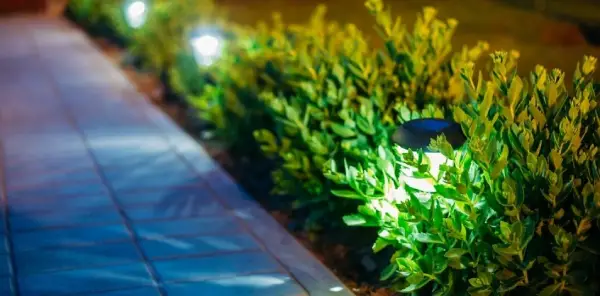
Care
Finally, low-maintenance gardens require little care after they are created. For the most part, this simply means not using pesticides or fertilizers to kill off soil pests and kill plants respectively. This does not mean you should let your garden completely go without any care whatsoever; you still need to weed and prune plants as necessary.
A lot of fertilizers and pesticides contain harsh chemicals that can leave a garden looking unsightly with burned foliage, so it’s best to avoid them altogether. If you must use them, try to find organic options. For instance, you can buy pesticides made from ladybugs that are much safer for your garden and pets in the long run.
When it comes to weeding, you have three options: hand-pulling, sprinkling cornmeal on the ground so it gets stuck in weeds, or using boiling water to kill weeds. If you use the cornmeal method, make sure to replace it every year since it will break down over time; otherwise, your garden could become infested with fungus and insects.
What is the easiest outdoor plant to take care of?
To have a low-maintenance garden, consider growing ornamental grass. These kinds of plants can be both deciduous and coniferous depending on the type you get. The only thing they require is regular watering during dry periods; however, most will go dormant once winter begins. This means that after their beauty season (fall), they will gradually lose their leaves and expose the blades of grass. They can, however, be brought inside to enjoy year-round as a houseplant if desired.
Whenever possible, choose plants that are native to your area. These kinds of plants tend to require less care than other types because they are better adapted to surviving in their environmental conditions. Native plants will also attract local wildlife that can help you get rid of garden pests for free!
One way to make plant identification easier is by planting particular varieties together. For example, you can group plants with similar water needs together, like sedum and ornamental grasses. Another way to make caring for your garden easier is by taking care of one area at a time. This means tackling the least cared-for areas first (such as overgrown prickly bushes) before moving on to more well-kept areas (like the herb and vegetable garden).
When weeding, it’s best to use a hoe instead of a weed puller since it doesn’t take as much effort. When pruning, do so after flowering has finished or during dormancy (when plants are not growing) to avoid unnecessary stress on the plant. Besides that, your plants should be able to take care of themselves!
How much time and money do you need to invest in your garden?
The amount of time and money you spend caring for your garden depends on the size and number of plants as well as what kinds of features you have. However, most low-maintenance gardens require only a few hours once a month to keep things in check.
What are some common plants used in low-maintenance gardens?
Some common plants that can take care of themselves include ornamental grasses, butterfly bushes (Buddleia), lavender, snake plants (Sansevieria), and cacti. There are many other varieties that do not need much care as well, such as amaryllis, lilies, and wildflowers.
What are some of the benefits of creating a low-maintenance garden?
Having a low-maintenance garden has many advantages over traditional gardens that require plenty of watering and weeding. For one thing, it can save you lots of time, which can be spent on enjoying other things instead. Also, you won’t have to worry about spending lots of money on planting flowers since the plants will likely take care of themselves.
What are some things NOT to do in a low-maintenance garden?
One thing you should not do is plant trees that require large amounts of water. Another mistake is to not group plants together in accordance with their water needs; otherwise, you’ll waste a lot of time and effort by constantly watering certain areas.
If you do not want to go through the trouble of growing edible plants, then don’t bother planting them at all! No matter how low-maintenance your garden may be, there are simply some plants that require too much care.
What are the best conditions for a low-maintenance garden?
The best conditions for a low-maintenance garden include full sun exposure, moist soil, and warm weather. Since many of the plants used in this kind of garden are temperamental to cold or frost, it’s important to pay attention to the expected temperature of your garden location.
What are some alternatives to low-maintenance plants?
If you don’t have a green thumb, then you may want to consider creating an urban garden. This is where certain landscaping features can be used in place of live plants. For example, items like stones and wire sculptures can be used as decoration. There are also alternatives to low-maintenance plants, such as those that do not require as much watering or weeding.
Do I need any special tools for low-maintenance gardening?
One thing you will want to invest in is a cultivator (a tool with sharp prongs). This can be used to help break up soil and get rid of pesky weeds. Besides that, you’ll only need basic gardening supplies like gloves, watering cans, and shears.
What are some general guidelines when creating a low-maintenance garden?
When creating your low-maintenance garden, the most important thing is to group plants with similar water needs together. Also, be sure to maintain your garden regularly (especially if you’re using it as a food source). Finally, avoid over-watering or over-fertilizing since this can kill plants.
Creating a low-maintenance garden is possible with the help of some basic knowledge and tools. By grouping plants together according to their water needs, you can ensure that your garden will be easy to take care of. Best of all, by investing just a few hours every month, you’ll have plenty of time left over to enjoy the peace and quiet!
What plants do well in the full hot sun?
Some plants that thrive in the full hot sun are petunias, begonias, and impatiens. These types of flowers do not like to be shaded and will suffer if high levels of shade exist where they grow.
What plants like full shade?
Some plants that do well in full shade are hostas, ferns, and bleeding hearts. These types of plants prefer indirect sunlight and won’t grow well if they receive direct sunlight.
What kind of mulch is best for a low-maintenance garden?
Organic mulches such as hay, wood chips, and coconut coir are best for a low-maintenance garden. They help promote healthy plant growth while protecting the soil from erosion and nutrient depletion.
When should I do the first planting of my low-maintenance garden?
The best time to plant your low-maintenance garden is in early spring once all danger of frost has passed. This will allow plants to grow during the warm summer months while protecting them from any unexpected frosts that may occur later on in the planting season.
What kind of shrub is best for a low-maintenance garden?
A lavender bush is one of the easiest shrubs to maintain. It can grow well in most types of soil and requires very little water after it has been established. It can also be quite drought-tolerant once it has become adapted to its environment.
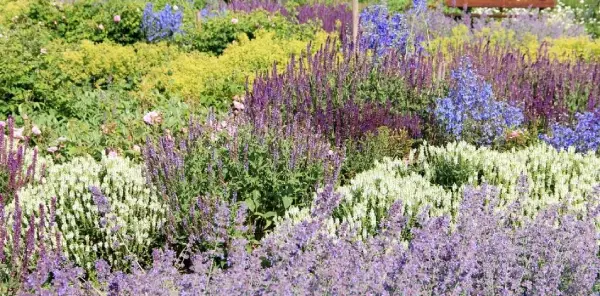
What can I have instead of a lawn?
There are many alternatives to a lawn. For example, gravel or pebbles can be used in place of grass while some homeowners choose to use wire sculptures and stones as decoration instead of plants.
What can I do if my garden does not receive enough water?
If your garden doesn’t receive enough water, you may want to consider adding additional irrigation systems or simply watering it by hand. In addition, you can plant drought-tolerant shrubs and flowers that don’t require as much water as o
What makes a garden look lush?
A garden is able to look lush with the presence of tall plants, shrubs, and flowers. Low-maintenance gardens are particularly attractive when they contain a variety of colors and textures along with tall or short plants.
What plants are good for outside all year round?
Some plants that are good for outside all year round include hostas, jasmine, and camellias. These plants do best in climates that have a moderate annual temperature with low humidity levels.
What outdoor plants can survive winter?
Some outdoor plants that can survive winter include palms, geraniums, and begonias. These types of plants add color and texture to the outdoor environment while surviving in areas with cold winter conditions.
What plants survive all year?
Some plants that are able to survive all year include geraniums, roses, and ferns. These types of plants do best in climates that have mild winter conditions with relatively low annual precipitation levels.
How does a weed suppressor work?
A weed suppressor is a material such as gravel, plastic, or landscape fabric that prevents weeds from growing. It will work by blocking sunlight and keeping water from entering the soil so that weeds cannot grow.
Final Words
Creating low-maintenance gardening is easy with the right tools and knowledge. Remember that it’s best to plant flowers, shrubs, and other types of plants that are able to thrive in any season while choosing an irrigation system that works for you. It can be beneficial to choose drought-tolerant flowers, shrubs, and trees as well as a lawn alternative such as gravel or pebbles. Your garden can look lush and beautiful by choosing tall plants, shrubs, and flowers that provide color and texture. Remember to plant any outdoor plants before the first frost of winter has occurred so that they will be able to survive throughout the entire year. On occasion, it may become necessary to weed your garden or to use a weed suppressor that will prevent weeds from growing. Remember that summer is the best time for planting while choosing shrubs, flowers, and other types of plants based on the environment in which they’ll be placed. By following these low-maintenance garden ideas, you can create a low-maintenance garden with ease.
10x for reading!
![]()








